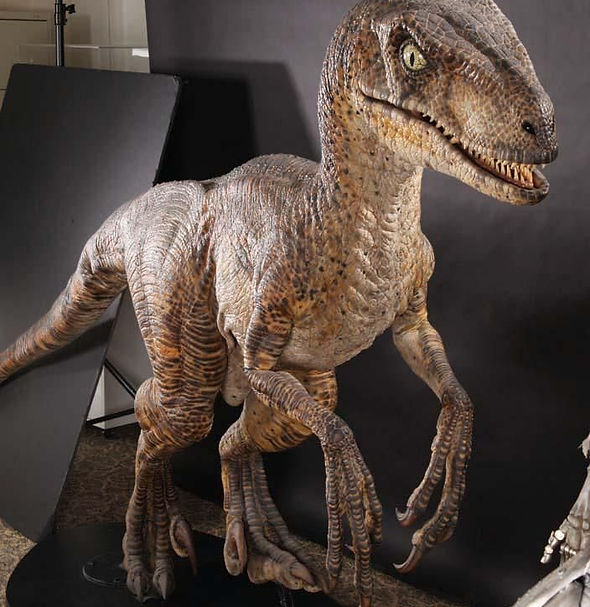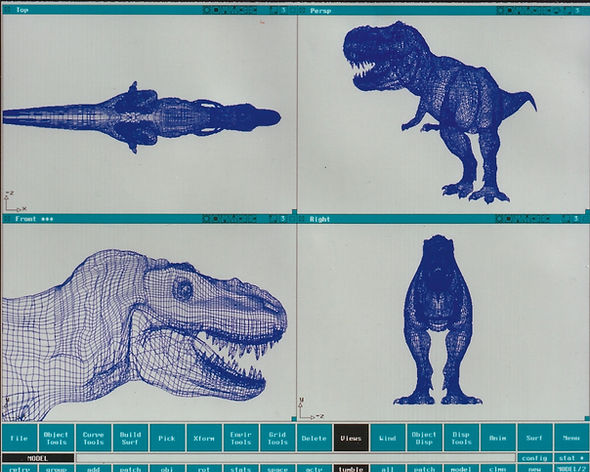






Shireen, Game of Thrones.
Makeup Artist Magazine, Issue 108 June/July, page74
Shireen is a young character from Game of Thrones, who is affected by a disease called 'Greyscale'. Her decription is that half her face and neck is covered in black and grey cracked, scaley skin, which is stony to the touch.
The article didn't say what the sculpt was based on or inspiration, but i personally think it looks distinctly reptilian. Obviously it has been painted to match her skin, but I think the freeform squarish shapes in the sculpt definately resemble crocodile scales. Maybe this was to create a hard, scaley illusion, as apposed to her flakey description. Or maybe they thought a scaley approach would be slightly kinder on the eye, than having a young girl with a flakey, black face.
Textural Research
Foy, S. (1982) The Grand Design. USA: BLA Publishing Ltd. pages 205-209
I decided to look at some images of real animal skins to get an idea of the kind of texture I need to emulate for my fish and reptile sculpts. As my concept is to do realistic animal skin grafts, I obviously want them to look as close to the real animal as possible.
I think the snake skin is a little too uniform to allow me to do anything interesting with it sculpturally. As the fish one is going to be so uniform, theres no point in me doing the same thing for the reptile sculpt. I will do basic scales (like in the image below) and the challenge for me will be painting it to create a shiny finish using products.
For the reptile sculpt, I think i will go with something more textural and rough, like the crocodile skin. This will give me the opportunity to practise my sculpting techniques more and add texture to a piece. It will also allow me to practise painting a textured piece, as apposed to just painting on skin on a smooth appliance.
Jurassic Park
The obvious example for any kind of reptilian makeup is Jurassic Park. Stan Winston and his team created life-sized prosthetic monsters, enhanced by CGI, typically run in foam latex.
I also fond an in'depth article on the use of CGI in Jurassic Park in conjunction with the huge model pieces created by Stan Winston Studios. The process is described in the article as "reverse 3D printing".
Acuna, K. (2014) Business Insider UK How 4 Minutes of CGI Dinosaurs in 'Jurassic Park' Took a Year to Make. [online] Available from: http://uk.businessinsider.com/jurassic-park-how-cgi-was-used-2014-11?r=US [Accessed: February 4th 2015]
MoreMore: Movies Features Jurassic Park Dinosaur
How 4 Minutes Of CGI Dinosaurs In ‘Jurassic Park’ Took A Year To Make
Universal
Universal Pictures unveiled the first trailer for next summer's "Jurassic World" movie Tuesday starring Chris Pratt.
From the looks of it, the fourth INSTALLMENT in the series will be filled with plenty of computer-generated (CG) dinosaurs and Velociraptors.
When the first "Jurassic Park" came out in 1993, it contained very little CG. Director Steven Spielberg originally wanted the dinosaurs in the film to be done through practical effects with stop motion.
It wasn't until producer Kathleen Kennedy spotted CG test footage of a T-Rex on a computer screen at visual effects studio Industrial Light & Magic (ILM), that it was decided to mix CG dinosaurs in with the live action film.
The Academy/YouTube
There are only 14 minutes of dinosaur visual effects in "Jurassic Park," about four of which were made with a COMPUTER, but its lasting effect on movies has been monumental.
Two years later, 1995's "Toy Story" was the first full-length computer-animated movie.
Today just about every film — from James Cameron's "Avatar" to summer blockbusters like Michael Bay's "Transformers" series — owes CREDIT to CG.
Business Insider spoke with Steve “Spaz” Williams, who was a CG Animator at ILM, the visual-effects studio that helped bring “Jurassic Park” to life.
Williams broke down the steps it took to bring the dinosaurs from paper and pad to the big screen in CG.
1. They begin with drawn designs and prosthetics of the different dinosaurs.
The production used CG for velociraptors, brachiosauruses, and the tyrannosaurus rex, which Williams worked on primarily.
Courtesy of Steve Williams.A T. rex drawing by Williams used to figure out where joints on the dinosaur would go.
2. Next, those renderings needed to make their way into the COMPUTER.
They SCANNED models, including ones for the T. rex and the velociraptors, into the computers.The Academy screengrabAccording to FXGuide, Williams took a model of a 5-foot T. rex made by Stan Winston to SCAN.
"In order to get it into the COMPUTER we actually fire a laser at the three-dimensional rubber prosthetic model and extract the data so the COMPUTER had it essentially," says Williams.
Williams explains it's like the opposite of 3-D printing with them taking an object and turning it into data.
3. They then reconstruct the data to make it work in the computer.
These are two images of T. rex data from Williams' monitor using SOFTWARE called Alias.
Courtesy of Steve Williams
Courtesy of Steve Williams
4. An animation piece of SOFTWARE called SoftImage 3D is used to figure out the joint placement on the dinosaurs.
Universal
Here, you can see one of the Brachiosauruses in the beginning of the film.
Universal
5. After that, the data has to be "rigged" with a digital armature in wireframes.
This is the framework for the dinosaur that helps provide its structure allowing it to stand up, move, and run.
"This is the first shot I animated for the movie after I built all of the T. rex data," says Williams. "It took me months to get this run right, but once done, we reused the run data for the rest of the jeep-chase shots and ultimately for the following two 'Jurassic Park' movies."Steve Williams/Vimeo
Below is another wireframe for one of the raptors in a kitchen scene where the two children are trying to outsmart the dinosaurs.
Academy of Motion Pictures Arts and Sciences/Academy OriginalsThis is a shot of one of the raptors from the popular kitchen scene in "Jurassic Park."
6. Next, the dinosaurs get their skin.
"We used a program called Viewpaint, which allowed us to actually paint the texture of the skin in the COMPUTER so now we have this textured map," says Williams.
7. To put all of the separate images together, they needed to be rendered by massive graphics COMPUTERS.
"Now we substitute in this high-resolution mesh data into a low resolution wireframe. That's all being done in computer," says Williams. "It pretty much took 10 hours to calculate one frame. You have to remember film is 24 frames per second. So it would sit there and crunch all night."
Williams built and animated the image below of the first fully rendered T. rex test. It was this video that convinced the producer Kathleen Kennedy and Steven Spielberg that "Jurassic Park" should be made in CG rather than stop motion.
Courtesy of AMPAS
Williams also animated all of the shots in a famous T. rex Jeep-chase sequence. He says each frame in the entire sequence took an estimated 12 hours to render.
The point where the T. rex breaks through the log is 75 frames long.
Steve Williams
"I animated all those shots where the T. rex is chasing the jeep. It took me four months to animate it, just to get the running to work properly," says Williams.
8. From there, the dinosaur needs to be put into a scene through a process called compositing.
This is where all the pieces to the puzzle are assembled together. CG shots are combined together with live-action shots and any background and foreground imagery referred to as plate photography.
In this case, live-action shots of actors were combined with photography shoots in Kauai and ILM's work on the brachiosauruses and birds.
Universal
Here's the final shot with the added dinosaurs:
9. Once it's put together, the images are reviewed to make sure they work. When everything looks good, the scene is put to film.
Final images are reviewed on a high-concentrated projector before translated to film.
All together, Williams says it took about a year to bring the dinosaurs to life.
“Basically May of ’92 to May of ’93 was the entire build and composite time for probably 40 shots,” says Williams.
After $1 billion at the box office, you can't argue with the result.

Raptor Maquette (uknown) [online] Available from:https://www.pinterest.com/pin/29906784995537679/ [Accessed: February 3rd 2015]
Even though this is only a maquette (and therefore limits ones level of achieveable detail), there is still intricate sculpting work done on this raptor.
You can see the directional lines on the top of its legs, and the individually painted scales along the top of his head.
The skin it not completely matte, but has a kind of soft sheen reflected off the scales.
I really like how th epaint job compliments the sculpt work so well and how the random imperfections make the piece more realistic.

© 2023 by Tennis Lessons with Karen. Proudly created with Wix.com